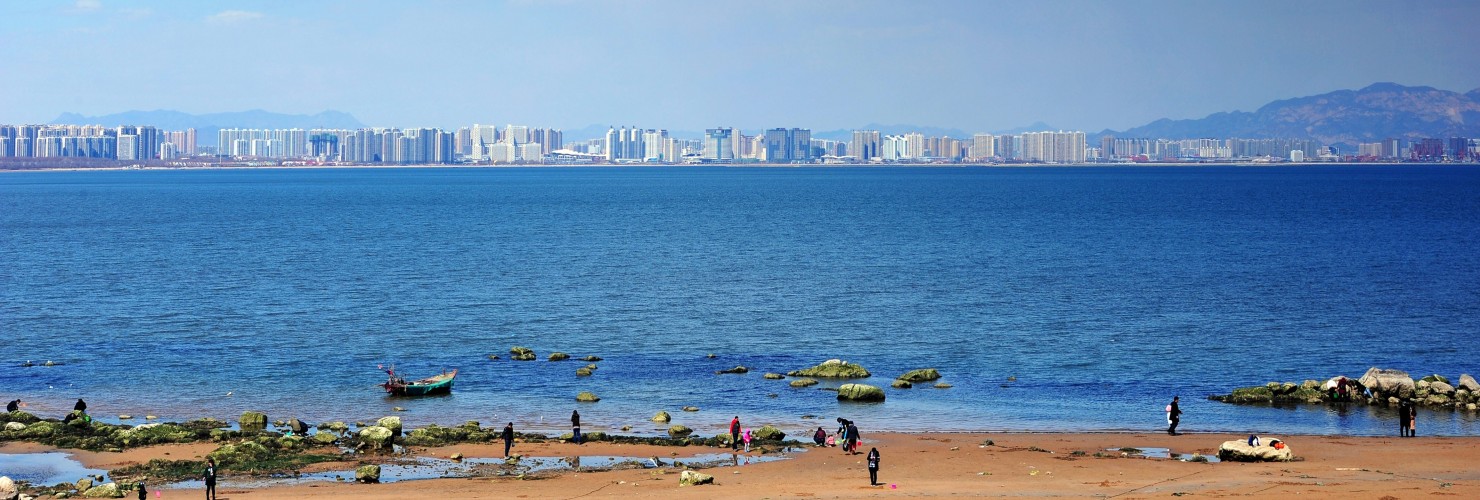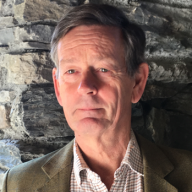

Does the “Beidaihe meeting” actually take place, and why does this matter?
While many are convinced of the existence of a secret annual high-level meeting in Chinese coastal resort Beidaihe, MERICS Senior Fellow Charles Parton says that the evidence points to the contrary, underlining Xi Jinping’s position of power.
Beidaihe, a stopover for migratory birds on China’s Bohai Sea coast, is famous for its birdwatching. Chinese Communist Party (CCP) leaders and elders also migrate there each August, when China watchers get out their binoculars in an attempt to spot the CCP’s “secretive annual conclave”. The fact that “Agendas and attendees are never confirmed, and there is likely to be little to no indication in official media that the gathering is even taking place”1 has not dampened the enthusiasm of these “twitchers”.
Many reputable newspapers see the “Beidaihe meeting” as an important moment in China’s political year. The New York Times spoke of “Xi and top officials and party elders….[being] expected to hold secret meetings in August in the seaside resort of Beidaihe.” Reuters described Beidaihe as the “site of a secretive annual summer party leadership conclave”, while The Guardian went as far as to say that “the [Pelosi] visit happened right before the Beidaihe conference – a secretive gathering of Chinese Communist party elites where major policy decisions are made.” But perhaps the prize goes to the think tank that commented: “While most outsiders will focus on the party congress in the fall, the real decision-making conclave is the annual August get-together of the CCP elders and high-level party officials at the beautiful beachside resort of Beidaihe.”
But does this “conclave” – a word suggestive of papal secrecy – exist beyond the imaginations of commentators? There is scant evidence that it does. And its existence – or non-existence – matters. If General Secretary Xi Jinping is indeed having to meet party leaders and elders prior to the fall party congress to discuss and agree major policy decisions and personnel appointments to be announced there, then he is not as powerful as many think.
History of the “Beidaihe meeting”
Known as the “summer capital” (夏都) because important government organs once decamped there to avoid the summer heat of Beijing, Beidaihe was the site of important conferences for a large part of CCP history. Perhaps the most famous was held in August 1958, when an enlarged meeting of the Politburo decided on the program of communization – the starting gun for the “Great Leap Forward”. It was also on this occasion that Mao Zedong decided to shell the Kuomintang (KMT)-held island of Jinmen.
Like many institutions in China during the Cultural Revolution, official meetings at Beidaihe fell into desuetude until revived by Deng Xiaoping. However in 2003, new General Secretary Hu Jintao stopped the practice. According to the party paper the People’s Daily, leaders of the main organs of government and the CCP were forbidden from working in Beidaihe. There is no evidence that his successor Xi Jinping reversed this. Indeed, given his December 2012 promulgation of the “Eight Decisions”, which bans government extravagance, any decision to allow essential leaders and their staff to head to the coast at the government’s expense would be anomalous.
What is the evidence for a meeting?
Certainly, most CCP leaders are in Beidaihe during the first two weeks of August. The usual press reporting of their doings elsewhere ceases, and July sees security around the resort tightened dramatically. Party elders – retired leaders – are also often known to be in residence at this time. Many commentators therefore assume that a “secretive conclave” is in session, especially given the history of Beidaihe.
But that is quite a jump in reasoning. The CCP is paranoid about the security of its leaders, who holiday in one place for security reasons. This may also help the leader and his supporters keep an eye on potential rivals. Most likely current leaders do meet their predecessors and have the courtesy to brief them on developments or to ask their advice.
What is the evidence against a “Beidaihe meeting”?
The evidence against is rather stronger. We could take the word of certain Chinese commentators such as Cai Guojun who, writing in August 2015, was puzzled by foreign journalists’ reporting on the meeting and stated that his investigations showed no evidence of it taking place. But there are plenty of other incongruities that argue against viewing Beidaihe as “the real decision-making conclave”.
Firstly, in the ten years of Xi Jinping’s leadership, there has never been a hint of what might have been discussed in Beidaihe. This is odd, because the party regularly announces top meetings and usually gives an outline of their content. Even with secret party meetings, reflections of the content often appear in provincial organs and party communications. Yet there have never been any leaks or references from Beidaihe. No one seems to ask why such a level of secrecy would be needed. The logical explanation for this radio silence on Beidaihe is that there is nothing to say.
Secondly, what need is there for another big important meeting? Surely not to discuss policy, given that the end of July saw three important meetings. The party’s top 400 officials met on July 26 and 27 to “learn the spirit of General Secretary Xi Jinping's important speech and welcome the 20th National Congress of the Communist Party of China.” This meeting may well have seen the launch of Xi’s draft report to the 20th Congress: given that there may be only two months before the congress, the report is likely to be well advanced. A Politburo meeting on July 28 discussed the economic situation and set the tasks for the second half of the year. And a United Front Work Department meeting on July 29 and 30 focused on its contribution to China’s rejuvenation.
This year is not unusual: in 2017 Xi also called a meeting of the top 400 cadres in July to set the stage for the 19th Party Congress. It is also worth noting that on August 10, 2020, the draft of the 14th Five-Year Plan and the lookahead to 2035 – a very significant document later ratified at the October plenum of the Central Committee – was handed down to the CCP and party elders. The draft would have been in a relatively advanced state of completion to have been cleared by the July Politburo meeting for dissemination and comment. Changes would still have been possible, but not of great substance. Given the dates of the so-called “Beidaihe meeting”, there would have been insufficient time to prepare for meaningful discussion there.
Thirdly, it would be odd to hold such a highly important meeting in the absence of Politburo and Central Committee members. Yet over the years, during the crucial early August period, top leaders have been reported elsewhere. This year, Foreign Minister and State Councilor Wang Yi was in Mongolia on August 8 and in Shandong a day later.2 In 2017, Politburo member Hu Chunhua was reported to be in Guangdong throughout the first part of August, while a high-level central delegation – including PBSC member Yu Zhengsheng and Politburo members Liu Yandong and Sun Chunlan – visited Inner Mongolia from August 7 to 11. So much for an important meeting to prepare for that year’s 19th Party Congress. In 2020, State Councilor and Minister of Public Security Zhao Kezhi was in Jilin from August 6 to 8, while Politburo Standing Committee (PBSC) member Li Zhanshu would have been chairing the Standing Committee of the National People's Congress, which met from August 8 to 11.
Fourthly, a common reason given for the “Beidaihe meeting” is to consult party elders. This too is unlikely. Many are senile; others are in prison. Hu Jintao was hardly a force of nature during his own period as general secretary. There is no reason to think he has accreted power in his retirement. The old faction-based analysis of CCP politics is well past its sell-by date. Courtesy and custom might call for a briefing on developments, but not serious consultation.
There is some evidence to support this. The August 10, 2015 edition of the People’s Daily carried an article about “heating up cold tea”, which sent out a strong message: “For leading cadres, after they retire from their posts and are no longer in charge of that work, naturally they do not have that power and responsibility. They must speedily adjust their mentality, adapt to life’s changes, so as to avoid falling into endless trouble.” Published at the time of the supposed “Beidaihe meeting”, this was a clear warning to ex-leaders to use the holiday for picnicking, not politicking.
In May this year, with less pointed timing, the CCP put out a similar warning to retired cadres in the form of rules entitled “Strengthening Party Building Among Retired Cadres in the New Era”. Retired cadres and party members were warned that they should avoid making “negative speeches” and “listen to the party and follow the party.”
Finally, it is often supposed that one task of the “Beidaihe meeting” is to agree the personnel promotions to be announced at the next plenum or congress. But most of the top party, government, and military posts have already been announced. We already know the names of the provincial party secretaries and governors, who, ex officio, will become members of the Central Committee. Xi has spent the last few years promoting his close allies to important posts. In July Wang Xiaohong was announced as the new minister of public security, a key position for controlling power, while Li Shulei was made deputy head of the powerful Propaganda Department in May. Both men look set for further elevation. Nor is this new. On August 1 (People's Liberation Army Day) 2015 – again, before any so-called “Beidaihe meeting” – Xi secured military promotions for many of those he trusted.
We do not yet know the composition of the Politburo or its Standing Committee, but it is a fair bet that Xi Jinping does. As the 20th Party Congress may be only two months away it is most unlikely that Xi has not already made dispositions, particularly given the important need for it to confirm the apotheosis of “Xi Jinping Thought” and his third term as party general secretary.
Commentators cannot have it both ways: if Xi Jinping is all powerful (and both the direction of policy and the promotion of those with connections to him suggests that he is), he does not need a “Beidaihe meeting”. If he is not, those arguing that case need to adduce evidence. That presented so far, much of which centers on supposed rifts between Xi and Premier Li Keqiang, has failed to convince. The outcome of the 20th Party Congress, assuming it confirms Xi’s domination of party politics, should at least close this debate.
CCP leaders are not superhuman. For the rest of the year, they pursue a gruelling schedule. During their time in Beidaihe, let us hope that they are indeed just bathing and having the occasional informal conversation. Let them relax and recharge their batteries. China – and the world – needs good decision making, not mistakes made through exhaustion.
- Endnotes
-
1 | Trivium, Aug 6, 2020
2 | https://english.news.cn/20220809/e9426a6e53c0476a90879c8f5547b95a/c.html and http://www.china.org.cn/photos/2017-08/11/content_41390465_6.htm
